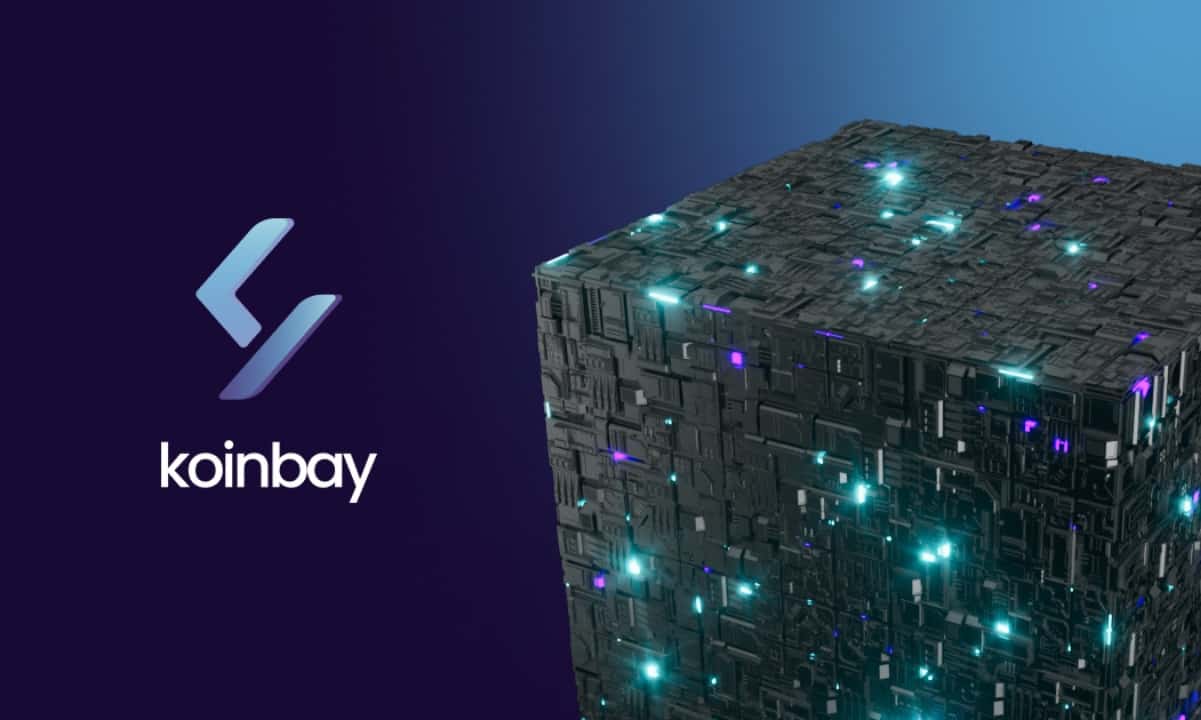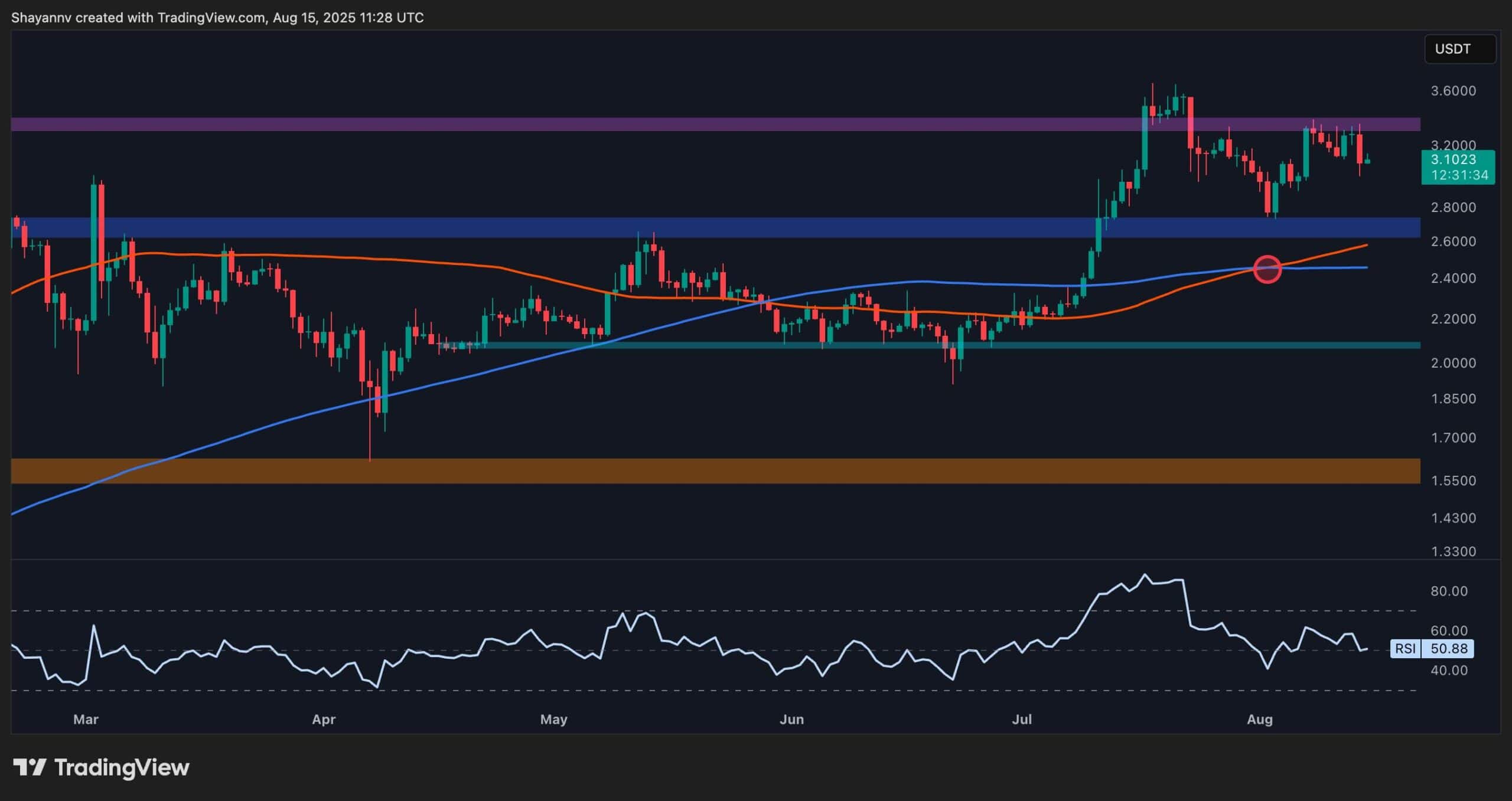Cryptocurrency
KoinBay Crypto Staking: Contributing to the Blockchain and Gaining Potential

Cryptocurrencies like Bitcoin rely on a process called mining to verify transactions and maintain the network. However, mining has limitations, particularly in terms of energy consumption and centralized computing power.
In recent years, a new alternative has emerged: crypto staking. Staking offers a different way to participate in the network, one that’s more environmentally friendly and potentially more engaging.
What is Crypto Staking?
Crypto staking is the process of allocating your crypto assets within a blockchain network for a set period. Think of it as placing your assets in a dedicated pool to contribute to the network’s security and operations. In return for this contribution, you receive rewards in the form of additional tokens.
Unlike Proof-of-Work (PoW) used in Bitcoin mining, PoS doesn’t rely heavily on computing power. Instead, validators are chosen based on the amount of tokens they’ve committed to the network. The more you contribute, the higher the chance you have of being selected to validate transactions and earn rewards.
Benefits of Staking: Network Support and Potential Growth
Staking offers several advantages over traditional digital asset mining:
- Network Support: By staking your tokens, you directly contribute to the security and stability of the blockchain network. This helps make the ecosystem more robust and reliable.
- Potential Growth: While not a guarantee, staking can increase your holdings through the rewards you earn as a blockchain participant. This can be a valuable way to expand your crypto portfolio over time.
- Energy Efficiency: Unlike PoW mining, which consumes significant amounts of energy, PoS is much more environmentally friendly. This makes it a more sustainable option for the future of crypto.
- Lower Barrier to Entry: Unlike mining, which requires expensive hardware and technical expertise, staking is generally accessible to anyone, regardless of technical knowledge or financial resources.
How Does Crypto Staking Work?
The specific process of staking can vary depending on the blockchain network you choose. However, the general steps are as follows:
- Select a PoS blockchain: Popular options include Ethereum, Tezos, Cardano, and Polkadot.
- Choose a staking wallet or pool: Some wallets allow you to stake directly, while others offer staking pools where you combine your funds with others to increase your staking power.
- Allocate your digital assets: Transfer the amount you want to contribute to your chosen wallet or pool.
- Start participating: Once your assets are allocated, you’ll automatically begin contributing to the network and potentially earning rewards. The exact rate of participation and potential rewards will depend on the network and the amount you contribute.
Things to Consider Before Staking
While staking offers potential benefits, it’s important to be aware of the factors involved:
- Volatility: The value of your staked assets can fluctuate significantly, leading to potential changes in their relative worth.
- Lock-up Periods: Some staking pools require you to commit your tokens for a set period, making them inaccessible for that time.
- Technical Risks: Staking on certain platforms can involve technical complexities. Always choose a reputable platform and thoroughly research any risks before making any decision.
Crypto staking provides a compelling alternative to traditional mining, offering network support, potential growth, and environmental sustainability. While it’s important to understand the factors involved and choose your platform carefully, staking offers a promising opportunity for those looking to actively engage with the blockchain and potentially expand their digital asset holdings.
Cryptocurrency Platforms that Offer Staking Feature
- Binance: ETH Staking on Binance is a service that allows users to stake their Ethereum (ETH) tokens to support the Ethereum network’s operations. By staking ETH, users contribute to the network’s security and efficiency, playing a vital role in its Proof-of-Stake (PoS) consensus mechanism.
- Kraken: Kraken also offers compelling options for staking digital assets and even cash. Two-week reward drops, instant unstaking, and zero penalties make staking simple and attractive.
- KoinBay: Boost your crypto on KoinBay with their powerful staking platform. Imagine your digital assets quietly generating rewards, week after week. KoinBay’s staking lets you easily commit your crypto and earn fresh tokens in return. Take your idle crypto from dormant to dynamic on KoinBay’s user-friendly platform and watch your holdings steadily grow.
- ByBit: ByBit Earn unlocks hidden potential within your crypto, transforming it from a static stash into a dynamic earner. Every 24 hours, fresh rewards automatically land in your wallet, ready to be re-staked or enjoyed, as you wish.
Embrace a future where your crypto not only holds value, but actively contributes to improving our daily lives. Crypto staking isn’t just about potential gains, it’s about taking a stake in a more secure, sustainable, and inclusive blockchain future.
With its lower barrier to entry and broader accessibility, staking invites everyone to become active participants in the crypto revolution. The future of crypto is built on participation, and staking offers a rewarding entry point for anyone to join the movement.
About KoinBay
KoinBay is a leading centralized crypto exchange that strives to provide a reliable and user-friendly platform for crypto enthusiasts to trade and navigate the dynamic world of cryptocurrencies. With a focus on innovation and cutting-edge features, KoinBay empowers users to make informed trading decisions and seize opportunities in the crypto space.
For more information, visit: https://koinbay.com/
Follow their social media for all the latest updates and announcements:
Twitter | Facebook | Instagram | LinkedIn | Telegram | YouTube
KoinBay Disclaimer:
Please be aware that trading in cryptocurrencies involves substantial risk and is not suitable for every investor. The volatility of the crypto market can lead to significant losses. We strongly advise that you trade at your own risk and discretion. It is essential to seek advice from registered legal, financial, and investment professionals before making any trading decisions. Our platform does not provide any form of trading or investment advice. All information on our exchange is for educational purposes only and should not be construed as financial advice. Make informed decisions and consider your financial situation and risk tolerance before trading.
CryptoPotato Disclaimer: The above article is sponsored content; it’s written by a third party. CryptoPotato doesn’t endorse or assume responsibility for the content, advertising, products, quality, accuracy, or other materials on this page. Nothing in it should be construed as financial advice. Readers are strongly advised to verify the information independently and carefully before engaging with any company or project mentioned and do their own research. Investing in cryptocurrencies carries a risk of capital loss, and readers are also advised to consult a professional before making any decisions that may or may not be based on the above-sponsored content.
Readers are also advised to read CryptoPotato’s full disclaimer.
Binance Free $100 (Exclusive): Use this link to register and receive $100 free and 10% off fees on Binance Futures first month (terms).
Cryptocurrency
Ethereum Foundation, Whales, and Hackers: What’s Driving the ETH Sell-Off?

TL;DR
- Whales, hackers, and the Ethereum Foundation wallets moved over $500M in ETH through large sales and withdrawals.
- Ethereum transfers rose to 4.6M ETH, nearing the monthly high of 5.2M recorded in July.
- Staking inflows hit 247,900 ETH, the highest in a month, locking more supply from trading.
Large Withdrawals and Whale Activity
Ethereum (ETH) has seen heavy movement from major wallets over the past few days. On-chain data from Lookonchain shows a newly created wallet pulled 17,591 ETH, worth $81.62 million, from Kraken in just two hours.
Over three days, two new wallets withdrew a combined 71,025 ETH, valued at $330 million, from the exchange.
One of these wallets, address 0x2A92, has withdrawn 53,434 ETH, worth $242.34 million, in two days. This includes a recent purchase of 30,069 ETH, valued at $138.46 million, during a market drop.
Major ETH Holders Offload Millions Amid Price Rally
In contrast, several separate entities have been disposing of some ETH holdings. A wallet tied to a hacker address 0x17E0 sold 4,958 ETH for $22.13 million at $4,463, securing a profit of $9.75 million. Earlier this year, the same address sold 12,282 ETH at $1,932 and later bought back part of the amount at higher prices.
A different whale sold 20,600 ETH for $96.55 million over the past two days, generating a profit of more than $26 million after holding the position for nine months.
Meanwhile, an Ethereum Foundation-linked wallet, 0xF39d, sold 6,194 ETH worth $28.36 million in the last three days at an average price of $4,578.
Recent sales from the same wallet included an additional 1,100 ETH and 1,695 ETH for over $12.7 million combined.
The #EthereumFoundation-linked wallet(0xF39d) sold another 1,300 $ETH($5.87M) at $4,518 ~11 hours ago.
Over the past 3 days, this wallet has sold a total of 6,194 $ETH($28.36M) at an average price of $4,578.https://t.co/4hfCWymHVG pic.twitter.com/ErUyEY8SJy
— Lookonchain (@lookonchain) August 15, 2025
Network Activity on the Rise
CryptoQuant data shows Ethereum’s total tokens transferred have been climbing since August 9. After ranging between 1 million and 3 million ETH through late July and early August, transfers have risen to 4.6 million ETH, approaching the monthly high of 5.2 million recorded in mid-July. This increase has occurred alongside a price rally from about $3,400 to $4,600.
Interestingly, staking inflows generally stayed between 20,000 and 80,000 ETH per day over the past month. On August 14, inflows jumped to 247,900 ETH, the highest in the period.
At the time, ETH was trading near $4,600. Large staking deposits reduce the amount of ETH available for immediate trading, as staked coins are locked for a set period.
In the meantime, ETH trades at $4,647 with a 24-hour volume of $68.25 billion, down 2% on the day but up 19% over the week.
Binance Free $600 (CryptoPotato Exclusive): Use this link to register a new account and receive $600 exclusive welcome offer on Binance (full details).
LIMITED OFFER for CryptoPotato readers at Bybit: Use this link to register and open a $500 FREE position on any coin!
Cryptocurrency
Massive DOGE Whale Activity Hints at $1 Breakout

TL;DR
- Whales bought two billion DOGE this week, lifting their combined holdings to 27.6 billion coins.
- A single 900M DOGE transfer worth $208M to Binance drew attention to large exchange movements.
- DOGE broke key resistance, with momentum building for a possible push toward the $1 price mark.
Price and Market Moves
Dogecoin (DOGE) traded at $0.23 at press time, slipping 4% over the past day but still showing a 2% gain for the week. Daily turnover came in at about $6.18 billion.
Meanwhile, the broader crypto market saw over $1 billion in liquidations. Hotter-than-expected US Producer Price Index data pushed traders to scale back expectations of a near-term Federal Reserve rate cut. DOGE had roughly 290,500 coins liquidated during the sell-off.
On the two-week chart, analyst Trader Tardigrade notes that DOGE has cleared a downward-sloping resistance line after completing what appears to be a “wave V” in an Elliott Wave sequence. Similar setups in the past, where prolonged declines stayed within falling channels before breaking higher, have been followed by sharp rallies.
$Doge/2-week#Dogecoin is gaining strong momentum to surge above $1 pic.twitter.com/TuSEKr19nv
— Trader Tardigrade (@TATrader_Alan) August 15, 2025
Momentum gauges are also turning up. The Stochastic RSI, which had dropped into oversold territory, is now heading higher. Previous reversals from this zone have coincided with sustained upward moves. The current formation points to a possible run that could carry DOGE past the $1 mark.
Heavy Whale Buying and Large Transfers
As reported by CryptoPotato, blockchain data shows large investors have added two billion DOGE in the past week, spending just under $500 million. That brings their holdings to about 27.6 billion coins, or 18% of the supply. The buying streak has prompted speculation within the community.
Recently, Whale Alert flagged a 900 million DOGE transfer worth about $208 million into Binance. The tracking indicates that it originated from a wallet connected to the exchange, likely as an internal activity. The address involved holds 2.88 billion DOGE, one of the largest balances on the network.
Ali Martinez also reports that transactions above $1 million reached a one-month high, with activity building since early August and peaking as DOGE traded at $0.25.
Whales are back! Dogecoin $DOGE activity at a 1-month high. pic.twitter.com/C83Pv68mCt
— Ali (@ali_charts) August 14, 2025
Sentiment Building
Analyst Gordon described the current setup as “a nice bit of consolidation” before a potential breakout, adding,
“This will be one of the first coins normies FLOCK to & the pump will be MASSIVE.”
With whale accumulation rising, high-value transfers increasing, and a bullish technical pattern in play, DOGE is positioned for a potential push toward $1 if momentum holds.
Binance Free $600 (CryptoPotato Exclusive): Use this link to register a new account and receive $600 exclusive welcome offer on Binance (full details).
LIMITED OFFER for CryptoPotato readers at Bybit: Use this link to register and open a $500 FREE position on any coin!
Cryptocurrency
Ripple Price Analysis: XRP at Risk as Key Support Levels Could Trigger Sharp Drop

XRP has recently entered a consolidation phase after a strong rally earlier this summer, with the price action now hovering around key resistance levels on both its USDT and BTC pairs. Yet, while momentum has slowed, the charts still indicate a generally bullish structure, with multiple key support levels remaining firmly in place.
Technical Analysis
By ShayanMarkets
The USDT Pair
On the XRP/USDT daily chart, the price is currently trading near the $3.10 mark, facing a strong resistance zone around $3.40. This follows a breakout above the $2.70 range in July, which has now flipped into a support area.
Both the 100-day and 200-day moving averages are also trending upward and recently formed a bullish crossover around $2.45, reinforcing the medium-term bullish sentiment. If the $3.40 resistance breaks, a push toward the critical $4.00 range becomes likely.
However, the RSI hovering near the neutral 50 level suggests a lack of strong momentum for now, meaning a short-term pullback into the $2.80 support zone is still possible.
This zone will be key for maintaining the bullish structure. Losing it could open the door for a deeper correction toward the 200-day moving average located around the $2.40 mark. Yet, as long as the price stays above the moving averages, the broader trend remains bullish.
The BTC Pair
Looking at the XRP/BTC chart, the pair has recently pulled back after hitting the 3,000 SAT resistance, with the price currently around 2,600 SAT.
This follows a clean breakout above the long-term descending channel and a successful retest of its upper boundary, which coincided with the 200-day moving average and the 2,400 SAT support zone. This confluence remains a key bullish technical factor, as holding above it could attract renewed buying pressure.
That said, RSI levels around 48 show that momentum has cooled after the sharp July rally, meaning XRP may continue ranging between 2,400 SAT and 3,000 SAT in the near term. A decisive close above 3,000 SAT would likely open the path to the 3,400 SAT zone, while losing 2,400 SAT could shift the bias back toward 2,000 SAT support. For now, the structure still favors the bulls as long as higher lows remain intact.
Binance Free $600 (CryptoPotato Exclusive): Use this link to register a new account and receive $600 exclusive welcome offer on Binance (full details).
LIMITED OFFER for CryptoPotato readers at Bybit: Use this link to register and open a $500 FREE position on any coin!
Disclaimer: Information found on CryptoPotato is those of writers quoted. It does not represent the opinions of CryptoPotato on whether to buy, sell, or hold any investments. You are advised to conduct your own research before making any investment decisions. Use provided information at your own risk. See Disclaimer for more information.
Cryptocurrency charts by TradingView.

 Forex3 years ago
Forex3 years agoForex Today: the dollar is gaining strength amid gloomy sentiment at the start of the Fed’s week

 Forex3 years ago
Forex3 years agoUnbiased review of Pocket Option broker

 Forex3 years ago
Forex3 years agoDollar to pound sterling exchange rate today: Pound plummeted to its lowest since 1985

 Forex3 years ago
Forex3 years agoHow is the Australian dollar doing today?

 Cryptocurrency3 years ago
Cryptocurrency3 years agoWhat happened in the crypto market – current events today

 World3 years ago
World3 years agoWhy are modern video games an art form?

 Commodities3 years ago
Commodities3 years agoCopper continues to fall in price on expectations of lower demand in China

 Economy3 years ago
Economy3 years agoCrude oil tankers double in price due to EU anti-Russian sanctions

























